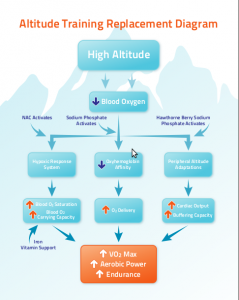
Effects of hypoxic training on VO2max in Thoroughbred Horses
It has been shown in a number of human studies that hypoxic training (alteration training) can improve performance for both endurance and short-duration athletes. However, when it comes to horses, there is not a lot of information.
Thoroughbred horses are considered elite athletes and can be put under a lot of pressure. When exercising at VO2max (maximum oxygen intake), they often experience severe hypoxemia (oxygen deficiency). This study aims to show if hypoxic training can help increasing VO2max of trained Thoroughbreds.
The study was conducted using 5 well trained horses. Prior to the study these horses underwent a supra-maximal treadmill training over 3 consecutive weeks in normoxia (normal oxygen concentration). This did not lead to increase in VO2max.
For the Hypoxic training (low oxygen training, or so alteration training), horses had to wear a semi-opened flow mask and run on a treadmill. During the study horses heart rate was measured and blood was drawn to measure the plasma lactate concentrations.
Training in hypoxic environment showed some benefits. After 3 weeks of training in hypoxic conditions the absolute VO2max improved. Also, the total running distance that these horses showed after the hypoxic training had an increase of 12% compared to the total running distance before.
These results show that hypoxic training can indeed be helpful and effective when it comes to increasing the aerobic capacities of horses. It might have the potential to enhance the peak normoxic performance. However, it should be taken into consideration that hypoxic training can generate more severe hypoxemia (oxygen deficiency), therefore more research is necessary.
> From: Ohmura, J Equine Sci 28 (2017) 41-45. All rights reserved to Creative Commons Attribution Non-Commercial No Derivatives (by-nc-nd) License. Click here for the online summary.


